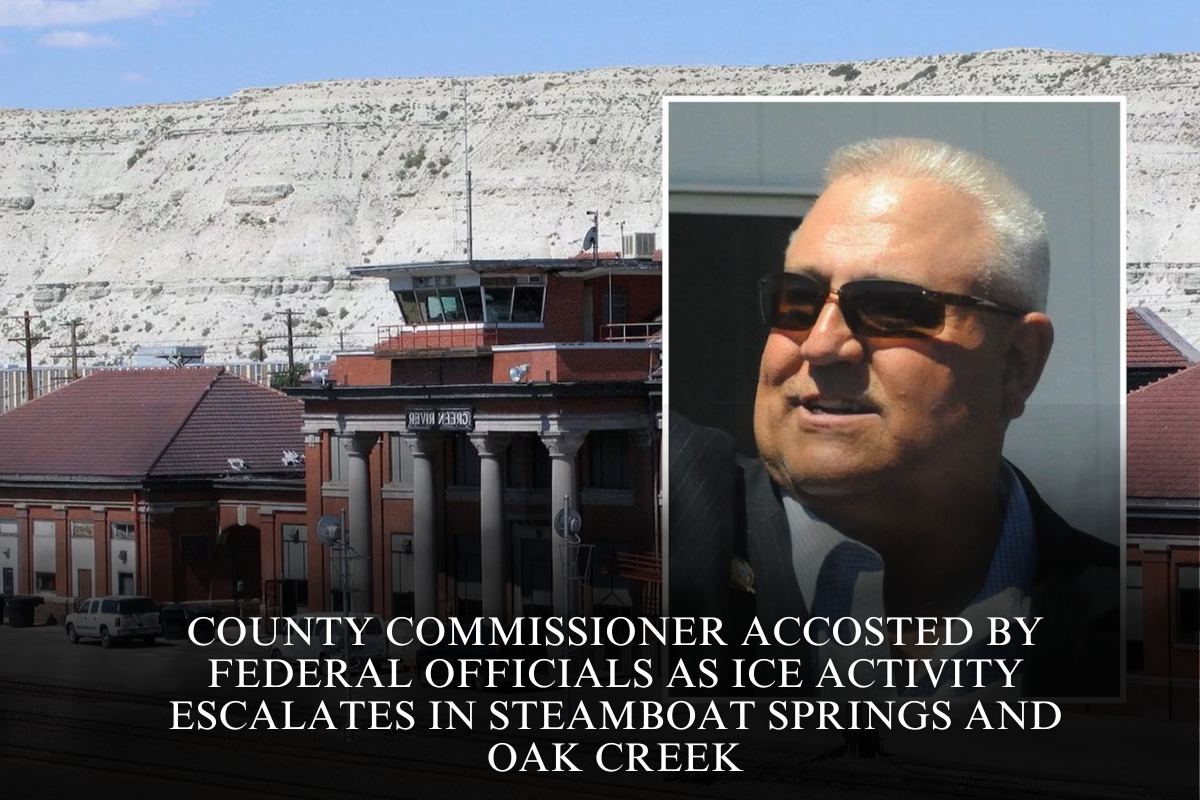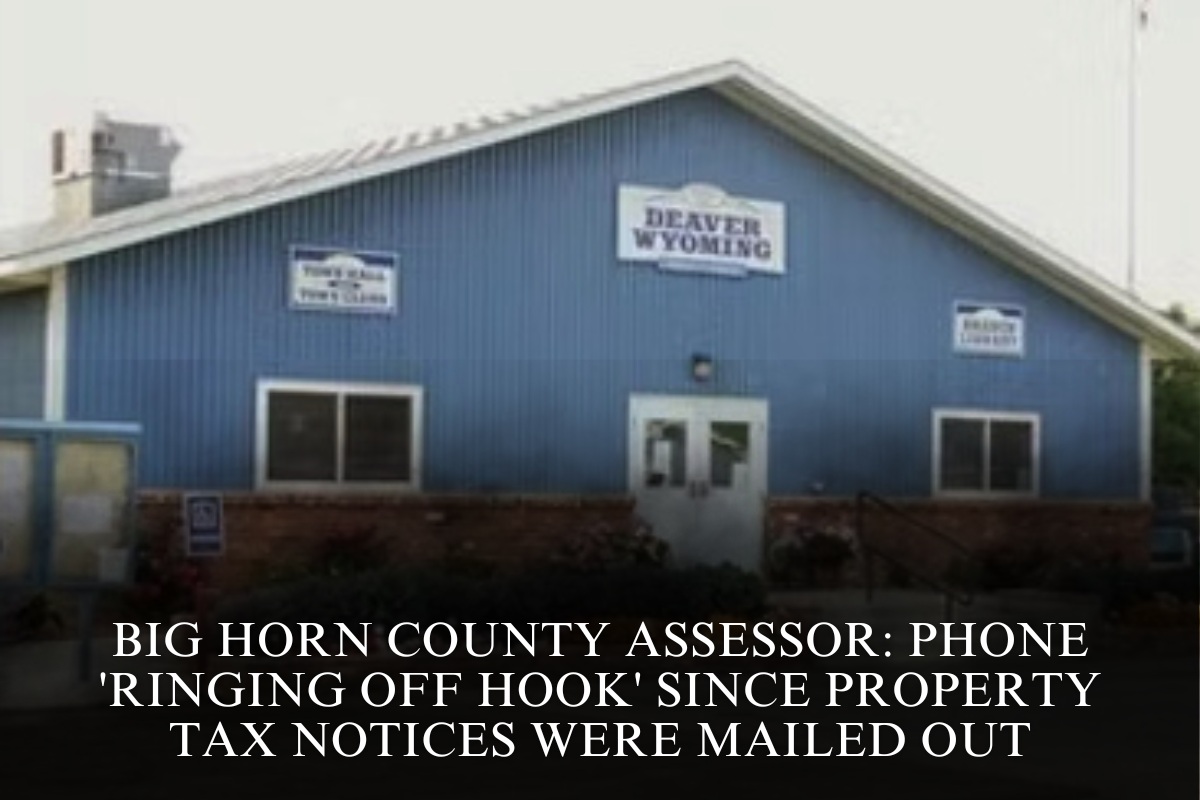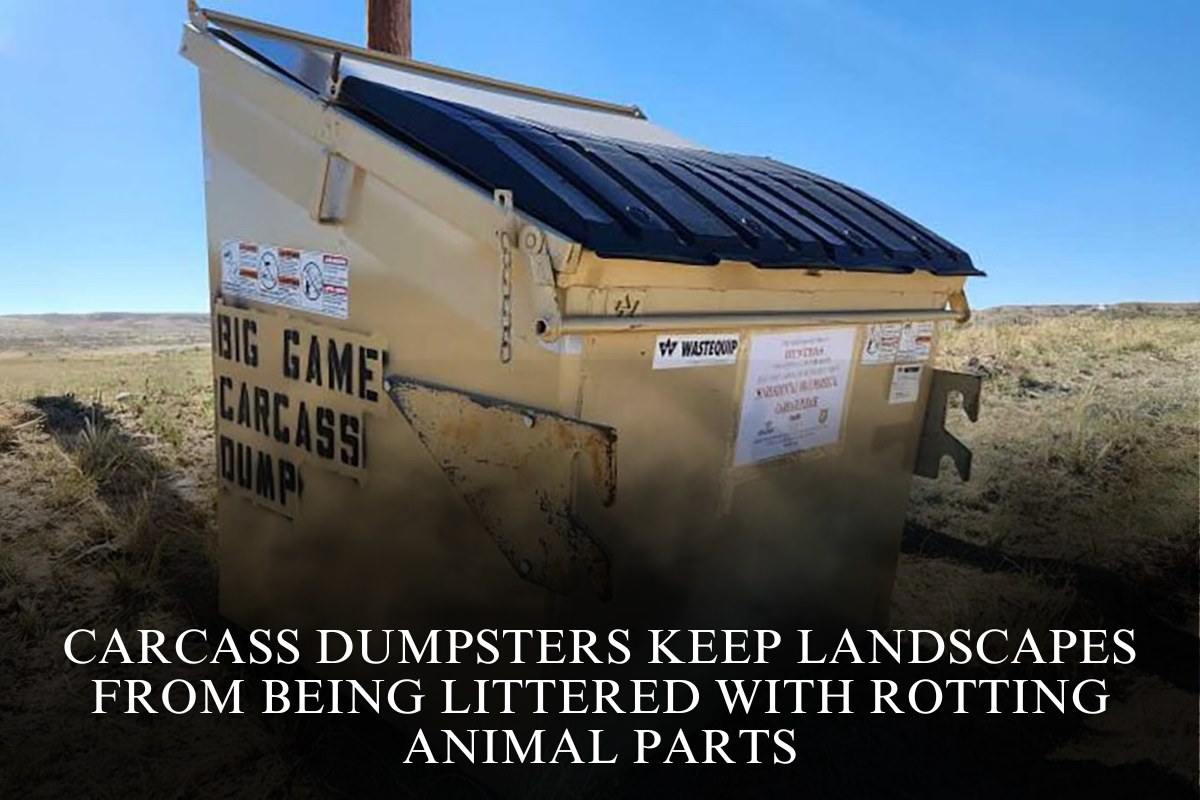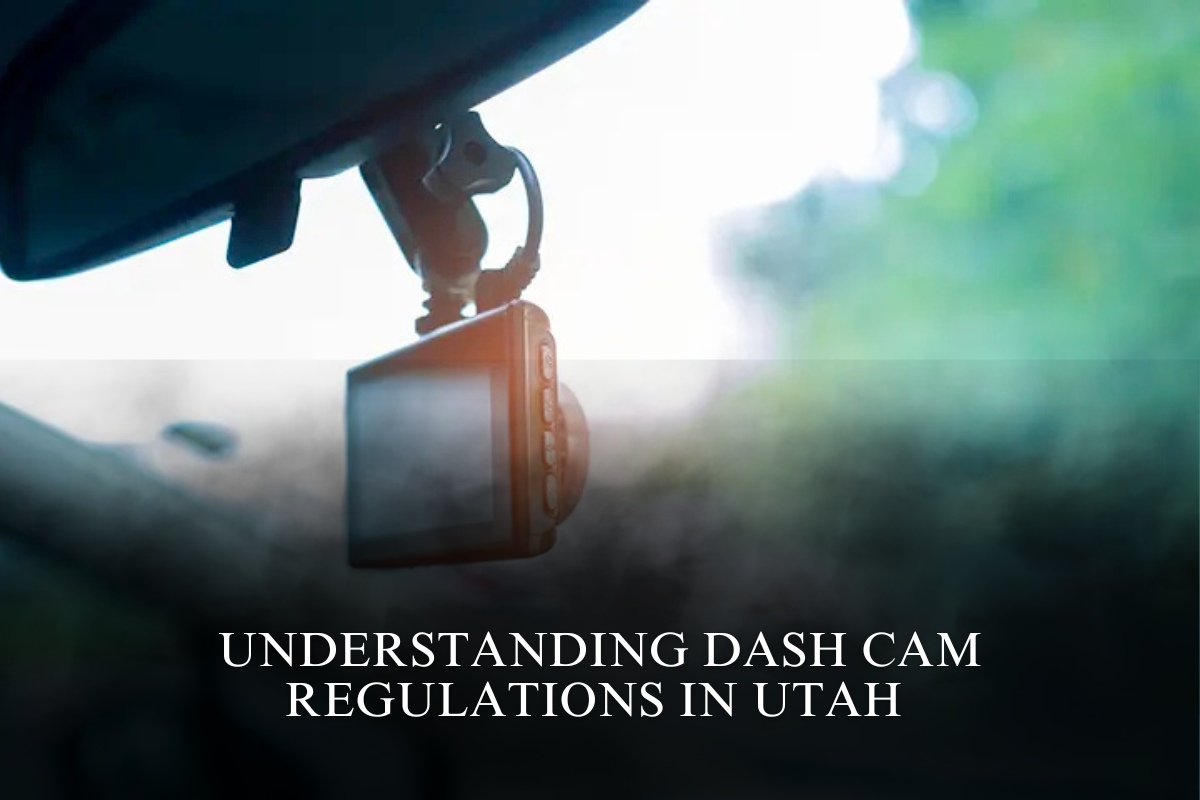The charred and burned remains of a train that derailed between Bosler and Rock River in August are still sitting in the weeds near where its cars left the tracks, scattering thousands of packages and sparking a fire.
The derailment occurred late in the afternoon due to what retired railroad worker and former legislator Stan Blake referred to as a “sun kink.”
That is a warp in the track caused by the heat of the sun beating down on it. They can happen quickly, and it’s difficult for a train to slow down and avoid them.
“They don’t like to call it a sun kink,” Blake said. “They call it a thermal misalignment.”
Sun kinks are just one of many things that can go wrong in the railroad system, resulting in a derailment. Track inspectors typically keep an eye out for these as they travel the rails in Wyoming, as well as the opposite condition, “pull aparts.”
These are places where the rails have pulled away from each other, usually when it’s cold, at a weak point, such as bolted joints.
“Track inspectors will have a truck, you’ll see a truck going down the rails,” Blake informed us. “And that’s usually a track inspector.”
Recent Green River Layoffs Part Of Larger Issue
Track inspectors are just one of the many cogs in the safety wheel that keeps railway cars moving across the tracks across Wyoming. Another of those cogs has been carmen, whose job is to look at all the inbound railcars for problems, particularly the wheels.
Every railway car wheel has a raised rim known as a flange on the inner side that keeps it on the track. That flange is thin, measuring only 1.12 inches, and it is subject to normal wear and tear as a car rides the rails. When the flanges become too thin, cars can derail, which is one of the many issues that carmen are looking into.
Wyoming recently lost a number of carmen at the Green River station, the latest in a series of workforce reductions that industry experts have testified to Congress totaling around 30%. Blake believes that the steady decline of the workforce with eyes on the railway system will result in more train derailments in the future.
“They eliminated 17 carmen positions,” Blake told the Cowboy State Daily on Tuesday morning. “And I’ve heard there was very little notice. It was, ‘you’ve got ‘X’ amount of time to clean out your lockers and you’re done.
The Problems With More Automation
Blake was a switchman for 31 years with Union Pacific and was also in charge of safety across Wyoming when he served as state director for the SMART Transportation Union, which represents about 125,000 active and retired transportation employees, including railroad workers.
Switchmen, he said, are typically not trained to identify railcar problems. They also have a number of jobs that keep them very busy.
“I think that the railroad is really counting on technology across the system,” says Blake. “They have a hot box detector, for example, which can tell if a wheel is hot, and they have a dragging equipment detector which can spot something hanging 244 cars back.”
There are also systems that perform automated track inspection, known as Track Geometry Measurement Systems, or ATI.
However, Blake stated that these automated systems occasionally fail to detect problems and do not always transmit data correctly. He is concerned that with fewer human inspections, problems that technology has missed will be identified less and less frequently.
“It could definitely cause more accidents,” Blake said. “There’s just a ton of different things that can go wrong.”
Union Pacific did not respond to Cowboy State Daily’s specific questions about what it is doing to ensure railroad safety in Wyoming.
Union Pacific’s Senior Manager of Communications, Mike Jaixen, stated that the removal of carmen from Green River and Roper, Utah, is intended to “align heavy locomotive and rail car repairs at locations that enhance freight fluidity.”
“Light repairs, fueling and inspections will continue at Green River and Roper,” according to him. “And all impacted individuals are being offered other employment opportunities across the railroad.”
Layoffs Come At A Time Of Change
Union Pacific’s layoffs come as railroad companies seek a number of waivers from federal railway safety regulations, including one that would reduce human track inspections by 75%.
The Association of American Railroads Association stated that the requested changes will improve safety, and that track inspection regulations, which have not been changed since 1971, require an update.
“Combining ATI with visual inspections enhances safety — full stop,” AAR Assistant Vice President Jessica Kahanek told Cowboy State Daily. “The waiver request would empower railroads to position technology and skilled employees where each can be most effective.”
In a pilot study, ATI reported identifying 200 defects for each one discovered through visual inspection, Kahanek said.
“In some test programs, it has led to over a 90% reduction in unprotected FRA main track defects — making a clear and compelling case for expanding ATI to enhance both the frequency and effectiveness of track inspections.”
Meanwhile, labor groups have opposed these changes, claiming that they will increase accidents, such as train derailments, with which Blake agrees.
“The Federal Railroad Administration has already gutted their inspectors,” he informed Cowboy State Daily. “You have less federal presence, and now fewer inspections all around.”
According to Blake, the automated tools that railroads want to use improve safety when used in conjunction with human inspections. However, they do not catch everything and are not yet ready to serve as the primary means of ensuring human life and safety.
The waiver sought by the Association of American Railroads also allows companies up to 72 hours to address defects before taking any immediate action.
Meanwhile, human inspectors can use their discretion to make immediate repairs or to slow or stop trains if a serious problem is identified.
Irreparable Damage To People, Communities
The Association of American Railroads has requested that more than 80 railroad safety regulations be waived, all while the industry has reduced workforce levels by more than 30%, according to Tony Cardwell, president of the Brotherhood of Maintenance of Way Employees Division, which represents track inspectors and other rail workers.
Cardwell testified to Congress in June that the decision to waive so many safety regulations in favor of automated systems is premature given what these systems can do.
“ATI (Automatic Track Inspection) cannot replace what a human track inspector does because it only inspects track alignment, elevation, and gauge,” Cardwell told the US House Committee on Transportation and Infrastructure’s Subcommittee on Railroads, Pipelines, and Hazardous Materials. “It does not inspect for track defects that cause a majority of track-caused derailments.”
The FRA has mandated that railroads look for 23 different track defects, Cardwell added, which is far more than an ATI can detect.
“Track defects are the second leading cause of rail derailments after human error,” the politician stated. “So it is essential to ensure that railroad tracks are free from defects.”
Cardwell acknowledged that ATI has been used since the 1970s to supplement human inspection of railroads and is effective at detecting track geometry flaws, as the name implies.
However, these account for only six of the 23 defects that the FRA requires railroads to inspect.
“ATI cannot detect defects like broken rails, rotten ties, washouts where the track has washed away, or obstructions in the right of way,” the contractor stated. “ATI can only detect 26% of what a human track inspector can detect, so it cannot replace human inspections.” Furthermore, ATI only detects defects, whereas track inspectors find problems before they become defects.”
Cardwell added that believing otherwise is a delusion that will lead to a “disaster.”
“What AAR seeks in their safety waiver could effectively result in passenger trains carrying people or freight trains carrying hazardous materials running over defective tracks,” according to Cardwell. “The consequences of allowing a defect to go unaddressed for up to three days could be yet another derailment that kills or severely injures people and causes irreparable damage to communities near railroad tracks.”
Too Many Wyoming Towns At Risk
According to Blake, many towns in Wyoming have railroads that run through them, and many of those towns have limited resources for responding to a train derailment, especially if the derailment involves hazardous materials.
“Union Pacific goes all the way across, it more or less follows I-80 at Granger,” according to him. “It runs through Kemmerer and Cokeville before entering Idaho and continuing on to Pocatello, as well as along the coal line. They continue on to Gillette after passing through Bill.
That’s just Union Pacific, Blake explained. That does not include the towns that BNSF passes through.
“Several years ago there was a train derailment out there by Hanna,” Blake told me. “And not that long ago, I don’t know how many years ago, they had an oil train that burst into flames because of a sun kink and that was just east of Rock Springs.”
Many communities have railways that run directly through busy business districts.
“The railroad splits Rock Springs right in half,” Blake informed me. “As does Evanston, to some extent. Laramie, not so much, but there are restaurants near the tracks.”
Trains must slow down when they reach city limits, but they continue to travel at speeds that would be dangerous in a derailment scenario.
“The speed through Rock Springs used to be 45 miles an hour,” he told me. “Maybe it’s 40 mph now, but it’s still cooking. I mean, thank goodness I was never on a trail that deviated like that. It would be extremely scary.”
Wyoming has experienced a number of train derailments over the last five years.
In 2020, a fiery crash occurred 4 miles east of Rock Springs, causing 39 cars to derail, nine of which were damaged or caught fire.
In 2023, a 12-car train derailed in Cheyenne, and 21 coal cars derailed in Lusk. This year, at least 15 Union Pacific railcars derailed near Walcott Junction in central Carbon County, including at least three tankers, in addition to the Bosler derailment.
These are just a few of the train derailments that have occurred in Wyoming over the last five years.
“These things are happening all over the place, and it’s frustrating,” Blake told me. “It’s scary.”












